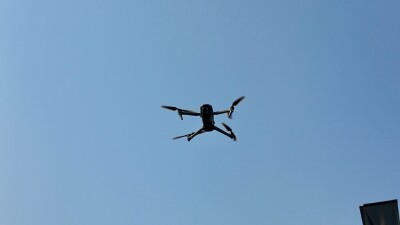On November 2nd, U.S. Secretary of Transportation Elaine L. Chao announced further details to the Department of Transportation (DOT) new Drone Integration Pilot Program. The event took place at the DOT Headquarters where Secretary Chao was meeting with hundreds of drone operators, industry leaders, members of the public, law enforcement/first responders, and local, state, tribal and federal officials.
The program follows a directive from President Donald J. Trump to initiate a pilot program to safely test and validate advanced operations through various partnerships across the country. The announced program will assess a series of operational concepts, including night operations, flights over people, flights beyond the pilot’s line of sight, package delivery, detect-and-avoid technologies, counter-UAS operations, reliability and security of data links between pilot and aircraft, and local management of UAV operations. The entire package of new and innovative technologies, and their joint integration, will be under the supervision and oversight of the FAA."The Drone pilot program will accelerate the safe integration of drones into our airspace by creating new partnerships between local governments, the FAA, and private drone operators,” said Secretary Chao. “These partnerships will allow local communities to experiment with new technologies like package delivery, emergency drone inspections, and more, on terms that work for them and in ways that support a unified and safe airspace."DOT officials have created a Federal Register notice specifying the timeframe, requirements, and goals of the new program, which is aimed at pairing state, local, and tribal entities together with private sector stakeholders in the drone industry to develop and deploy new operational concepts that are not currently in widespread use. The key first step in the program is for government officials to complete a Notice of Intent, signifying their intention to complete a full program application.Applicants will have 20 days from the date of publication of the Notice in the Federal Register to complete a Notice of Intent, followed by the requirement that they complete an application through the FAA/UAS Portal within 57 days of the publication in the Federal Register. Within 180 days, initial program applicants who receive approval could begin deploying drones under the limitations coordinated and agreed to with the FAA. The program will last for three years.In her address to the multi-jurisdictional group, Sect. Chao emphasized the fact that the program application and eventual deployment process will move swiftly given the high priority for her department to encourage innovation in the drone industry while ensuring safe skies for the communities involved. It's the reason the pilot program is aimed at addressing the most severe challenges around the safe integration of manned and unmanned aircraft on the national airspace while making sure that risks are minimized for the public and security is assured. The program was initially designed to offer greater regulatory certainty and stability to local and state governments. UAV owners/operators who are accepted into the program will also be able to have that same certainty and stability.Brian Wynne, President and CEO of AUVSI (Association for Unmanned Vehicle Systems International), was at the event, and he mentioned: “More and more businesses and public safety providers are embracing UAVs to expand and enhance their service offerings. This growing demand illustrates a new renaissance in aviation and technology, which requires sustained collaboration and support by governments at every level."FAA Administrator Michael P. Huerta who was also present at the event, was enthusiastic that the initiative will help integration and innovation. He said: “This program will put community and industry partnerships at the leading edge of aviation technology. What we learn through testing operational concepts in these communities will be invaluable and give us clarity on rules that ensure safety and continued innovation.”After evaluating all the applications, the U.S. DOT will select a minimum of five partnerships and the announcement will be made soon after, following the timelines specified in the Directive.Subscribe
The information you submit will be stored and used to communicate with you about your interest in Commercial UAV News. To understand more about how we use and store information, please refer to our privacy policy.
November 10, 2017
Federal DOT Announces a New Pilot Initiative to Expedite Integration of Manned and Unmanned Aircraft















Comments